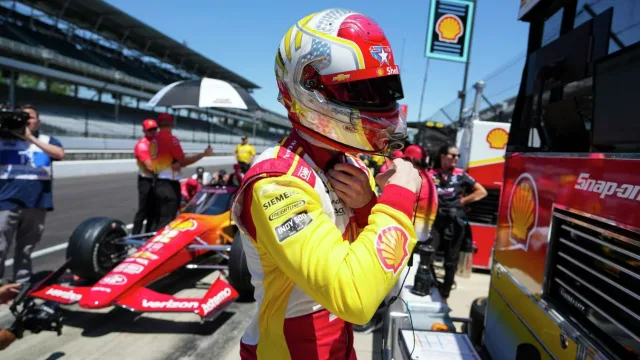A serious controversy struck the Indy 500 qualifying rounds as Team Penske, one of the most storied teams in motorsports, was penalized for an illegal modification to the rear attenuators on two of their cars. The incident, which unfolded just before qualifying at Indianapolis Motor Speedway, saw the #2 and #12 cars withdrawn from the Fast 12 lineup after IndyCar officials discovered that regulations had been breached. The violation, centered around a filled seam on the attenuator, was deemed an attempt to achieve an aerodynamic advantage, casting a shadow over Team Penske’s reputation and jeopardizing its prospects for the iconic race.
IndyCar officials moved rapidly as the inspection process revealed irregularities. According to technical delegate Kevin Blanch,
The rear attenuator, a vital crash structure housing the rear light, is a component that teams are strictly forbidden to modify. The discovery that the seam had been filled suggested Team Penske was attempting to reduce drag and secure a competitive edge, a move in direct violation of technical regulations.
While Will Power’s #12 car had initially passed inspection, scrutiny intensified after the discovery on the #2 car led to retroactive analysis. Team Penske’s decision-makers, including IndyCar program president Tim Cindric, ultimately withdrew both cars.

Cindric explained.
he added despondently.
Cindric further clarified Team Penske’s position by stating,
Despite the rationalizations, the violation left Team Penske forced to accept the penalties.
As a direct consequence, Scott McLaughlin, who did not have the same infraction after crashing in practice, starts from 10th, Josef Newgarden from 11th, and Will Power from 12th on the grid. This lineup stands in striking contrast to the previous season, where Team Penske secured all three front row slots, making this turn of events especially dramatic and disappointing for the team and its fans alike.
Voices from the paddock amplified the intensity and disappointment surrounding Team Penske’s actions. Pato O’Ward, McLaren’s leading contender who qualified third, did not hold back.
O’Ward remarked pointedly, suggesting the modification was deliberate. He expressed frustration and sympathy for drivers who had to face last-minute qualifying challenges due to the situation.
O’Ward’s words underscored the deep sense of injustice felt by some competitors, as well as the confusion and tension that the controversy ignited.
The impact was swift and personal for several drivers. Dale Coyne Racing’s Jacob Abel missed out on a race slot, while Marco Andretti, Marcus Armstrong, and Rinus Veekay scraped through the Last Chance Qualifier. The reordering of grid positions left lingering disappointment, both for those who benefited and those who suffered as collateral damage in the incident.
This penalty is not the first time Team Penske has faced scrutiny for breaching series rules. Just over a year ago, the team was entangled in a well-publicized push-to-pass scandal. The repeat infractions cast a long shadow over the organization’s operations, prompting difficult questions about its compliance culture and competitive integrity. The controversy signals a somber moment for the team, known for its high standards and remarkable successes in American open-wheel racing. The sport itself must consider how to enforce its regulations while maintaining the respect and trust of its competitors and fans.
As the Indy 500 approaches, the fallout from Team Penske’s penalization remains unresolved. The drivers and team management are left to rebuild trust amid scrutiny from rivals and the greater racing community. The incident raises stakes and emotions heading into the legendary race, with questions swirling about how Team Penske will respond and whether further investigations or penalties might be necessary. For now, the team’s hopes for redemption rest on its ability to learn from this setback and renew a focus on transparency and fair competition.
